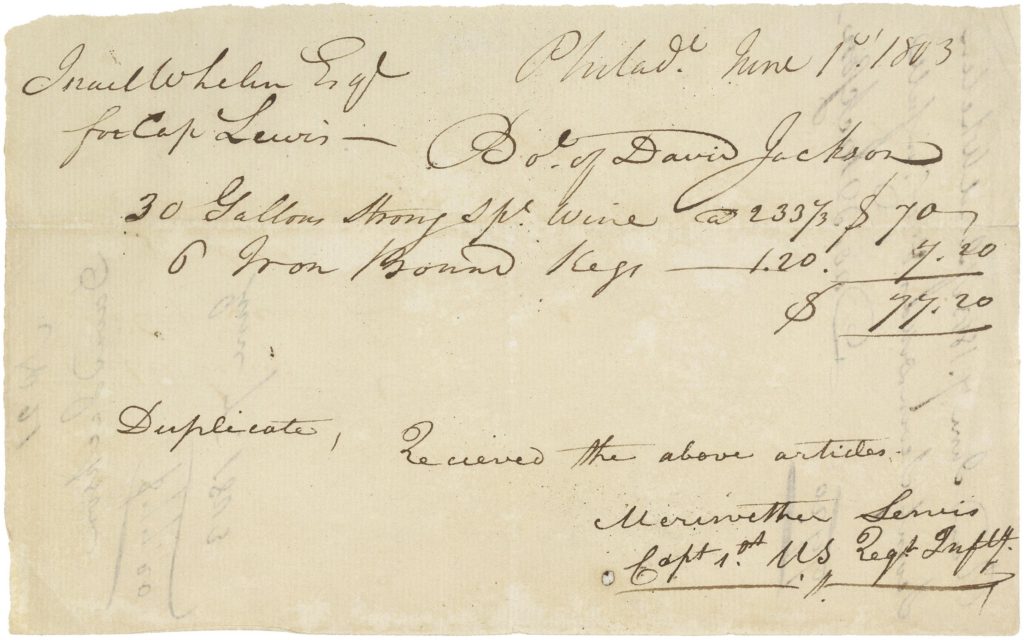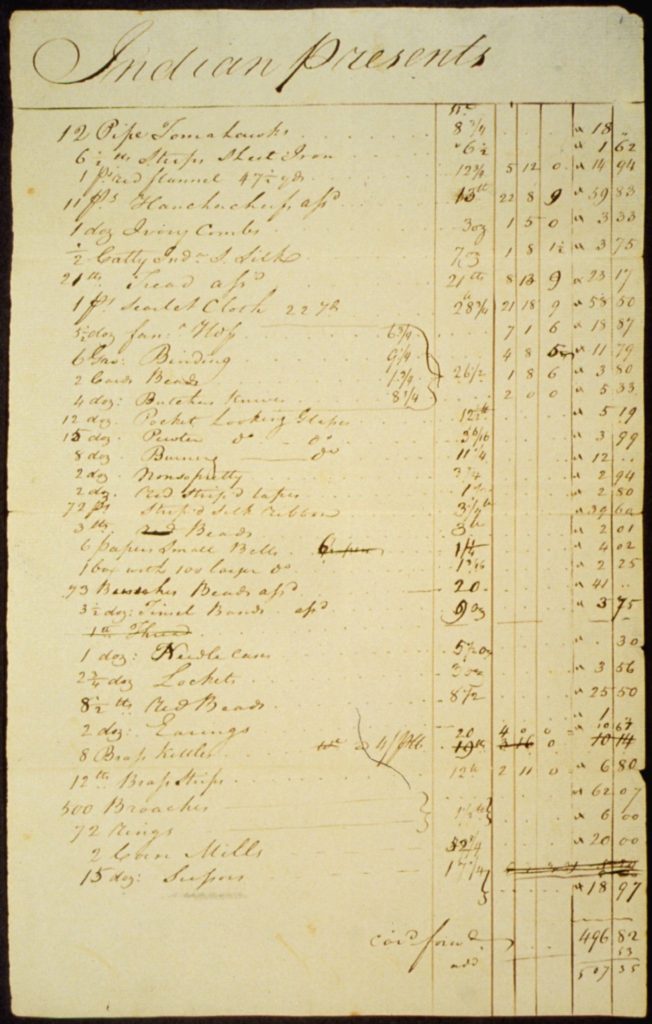
The first Americans generally credited with “writing the Northwest” were Captain Meriwether Lewis and 2nd Lieutenant William Clark, who reached the Pacific Ocean on this date 216 years ago. The journals covering their approximately-two-and-a-half-year journey, written by them and four of the three dozen men in their Corps of Discovery, stretch to over a million words. Not all of them are about the Pacific Northwest, of course, but a fair number are.
The entry for November 16, 1805, their first full day in view of the Pacific, for example, contains these lines:
“We are now in plain view of the Pacific Ocean . the waves rolling, & the surf roaring very loud. on the opposite shore to us we discovered, the Tops of trees which we supposed to be on an Island laying a very great distance in the Ocean. [10] We are now of opinion that we cannot go any further with our Canoes, [11] & think that we are at an end of our Voyage to the Pacific Ocean, and as soon as discoveries necessary are made, that we shall return a short distance up the River & provide our Selves with Winter Quarters, & We suppose that we shall find a considerable Quantity of Game low down on the River.”
It also says: “A Number of Indians staid with us all day.”
The entry was made near the mouth of the Columbia River, almost exactly one year and six months after the Corps left St. Louis. Historians tend to agree that the explorers would never have made it that far if not for the help of many individuals in the estimated 100 Indian tribes whose lands they crossed on their long voyage. The most famous, of course, is Sacagawea, a young Shoshone woman who grew up among several tribes and served the Corps as guide, interpreter and promoter of friendly relations with those whose lands they traveled through. But there were others too.
For example, a recent article by journalist Will Phinney on the website Underscore News mentions that “[a] Nez Perce woman named Watkuweis helped guide the expedition over the Bitterroot Mountains in Montana, persuading her people to befriend rather than kill the weak and starving strangers from the east.” And five Nez Perce teenagers “helped the men cross the mountains and make camp at Lolo Hot Springs.”
Phinney goes on to talk about tribes in the Columbia plateau providing the expedition with dogs for food; Indians near the Columbia and the Pacific supplying elk and deer, as well as blubber and oil from a beached whale; and indigenous people everywhere offering maps and directions and other essential help. Among the NW tribes the article mentions are the Umatilla, Cayuse, Yakama, Wasco, Wishrams, Wanapum, Walla Walla, Cowlitz, Multnomah, Chinooks, Clatsop, Skilloots, Tillamook, Kathlamets, and Wahkiakums.
Phinney’s article, titled “The Lewis and Clark Expedition from an Indian Country Perspective,” is about a reinterpretation of the Lewis & Clark expedition currently being undertaken through a partnership between the National Park Service and the American Indian Alaska Native Tourism Association (AIANTA), an indigenous tourism group.
According to Phinney, the two groups are collaborating “to develop online itineraries to promote the tribes that intersected with Lewis and Clark on their way across what became the United States.” In addition to information on tribal events and sites, the online guides will provide stories that “reflect the expedition from an Indigenous perspective, as told by the descendants of those who encountered the explorers as they made their way west.” To find out more, go to the websites LewisAndClark.travel and NativeAmerica.travel.
You can read all of the Lewis & Clark writings online at the “Journals of the Lewis and Clark Expedition” website, sponsored by the National Endowment for the Humanities, the Center for Great Plains Studies, the University of Nebraska Center for Digital Research in the Humanities, and University of Nebraska Press.
You can buy them all too, in 13 volumes, or opt for the 467-page abridged edition. If you’d prefer to have someone else interpret them for you instead of wading through them yourself, there are any number of sites and books ready to do just that. American Heritage, for example, has a handy list of the “The Ten Best Books” about Lewis and Clark. And Amazon offers dozens and dozens more, including many children’s books and at least one book about Captain Lewis’s dog, Seaman.
Nowhere in all of these books, however, do the indigenous people of the Northwest speak for themselves. Some writers have attempted to approximate the Indian perspective–mostly notably (and perhaps regrettably) in fictionalized first-person accounts by Sacagawea in novelist Brian Hall ‘s I Should Be Extremely Happy in Your Company: A Novel of Lewis and Clark and Scott O’Dell’s children’s book Streams to the River, Rivers to the Sea: A Novel of Sacagawea–but these attempts have tended to be awkward or arrogant or merely speculative. Often, all three.
Sadly, we will never be able to read the actual writings of indigenous people from pre-contact times in what has come to be called the Pacific Northwest. We will always be forced to try to intuit their thinking from writings written by others, often for exploitative purposes. But perhaps the project Phinney has written about will help us imagine what their perspective might have been and provide a necessary corrective to the traditional American narrative, in which outsiders like Lewis and Clark are inevitably portrayed as the heroes.
You can learn more about L & C’s brief stay near the Pacific Ocean in this HistoryLink.org entry: Lewis and Clark Expedition reaches the Pacific Ocean on November 15, 1805.

(To leave a comment, click on the blog post title.)
Leave a Reply